How A Land Rover Defender Becomes An Unlikely Rally Hero

From the outside looking in, rallying can be a tricky sport to get into. For most, it comes at an early age - and often with someone close in your family already competing in the gruelling form of motorsport.
Unlike circuit driving, in which you can always stump up a bit of cash for a day out go-karting or the odd track day, hopping onto the path to rally can be a lot tricker. After all, it’s not like you can just close off a forest road and pretend you’re Tommi Makinen.
That’s not to say it’s not possible to buy your way into the sport though. Say you’re a successful businessperson, a once-been popstar or happened to win the lottery and you’ve got a penchant for rallying. However, you’ve never once stepped into the world of competitive motorsport, let alone rallying, what do you do? Well, that’s where Bowler comes in.
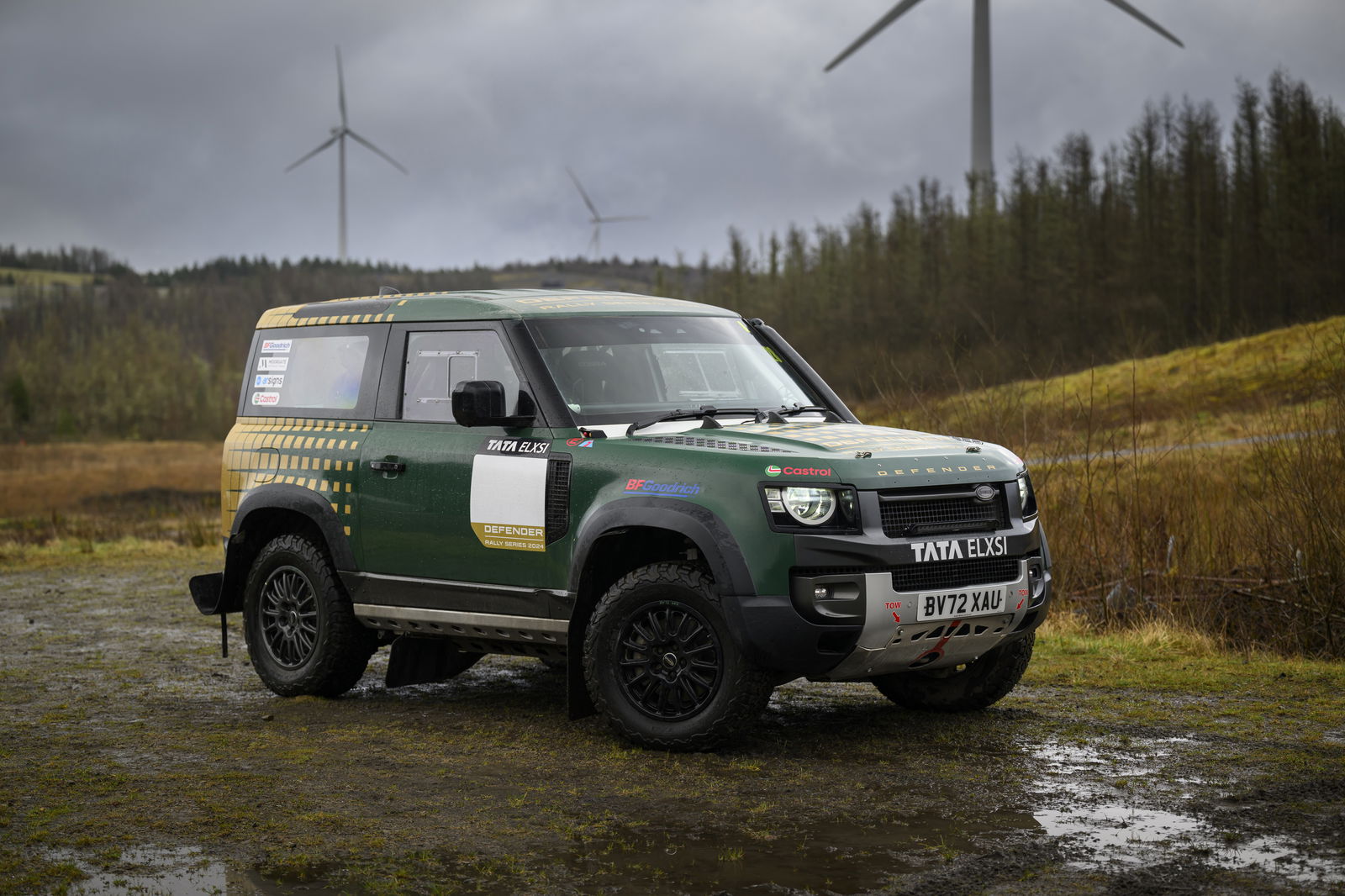
Three years ago, it launched the Defender Rally Series, a single-spec rally championship using the new Land Rover Defender at its core. At £150,000 for the car and an entry in the season, though, it’s not exactly cheap. However, unlike most entry-level rally series, it’s not just a case of you buying a car and having to deal with the rest yourself.
Bowler is keen to stress the Defender Rally Series is more akin to a driver (or co-driver, if you wish) development program than simply a competition.
Your £150,000 doesn’t just buy you the right to race. Bowler deals with everything else you need - the support crews, spare parts, servicing your Defender, organising the events and they’ll even feed you. All you have to do is turn up at any of the seven UK rounds you’re able to with a BARS licence, helmet and suit.
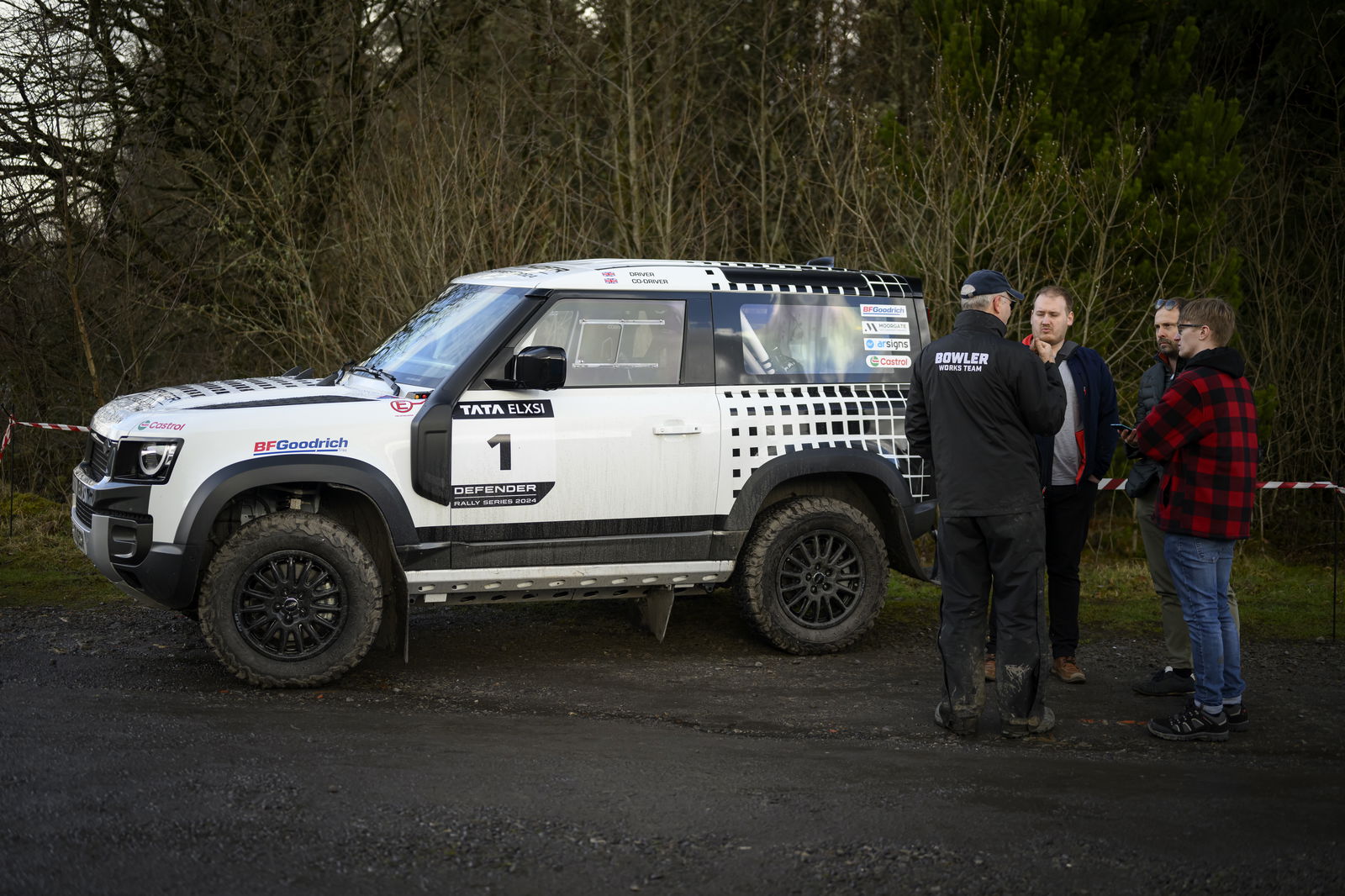
There’s more of a rally summer boot camp feel than an outright battle for a title. Sure, there’s a prize to be won but Bowler wants the Defender series to be more the start of a journey into motorsport, which is reflected in the way the calendar is laid out. Early events feature short stages and relatively consistent surfaces, though begin to increase in length and difficulty as the season progresses. The idea is that by the time you’re at the end of a year, you’ve covered the basics to take on tougher, more global rally raid events.
It’s the first of these events I’m at, taking place in the boggy landscape of Wales’ Walters Arena. Although it is the opening event, it’s not necessarily ‘easy’ - our group is taken on a recce of the testing stage, taking us through the heart of a forest and with some daunting, rock-filled narrow sections. The weather hasn’t been particularly kind either, leaving a fair heft of mud ruts filled with deep, brown puddles.
At this point, the nerves are beginning to set in - I’ll be taking on this route later in the day in one of Bowler’s Defenders. It’s worth mentioning at this point that my rally experience outside of the Dirt Rally video game series is zero, and I’ve only once stepped into a competition car before - let alone tackled a forest stage.
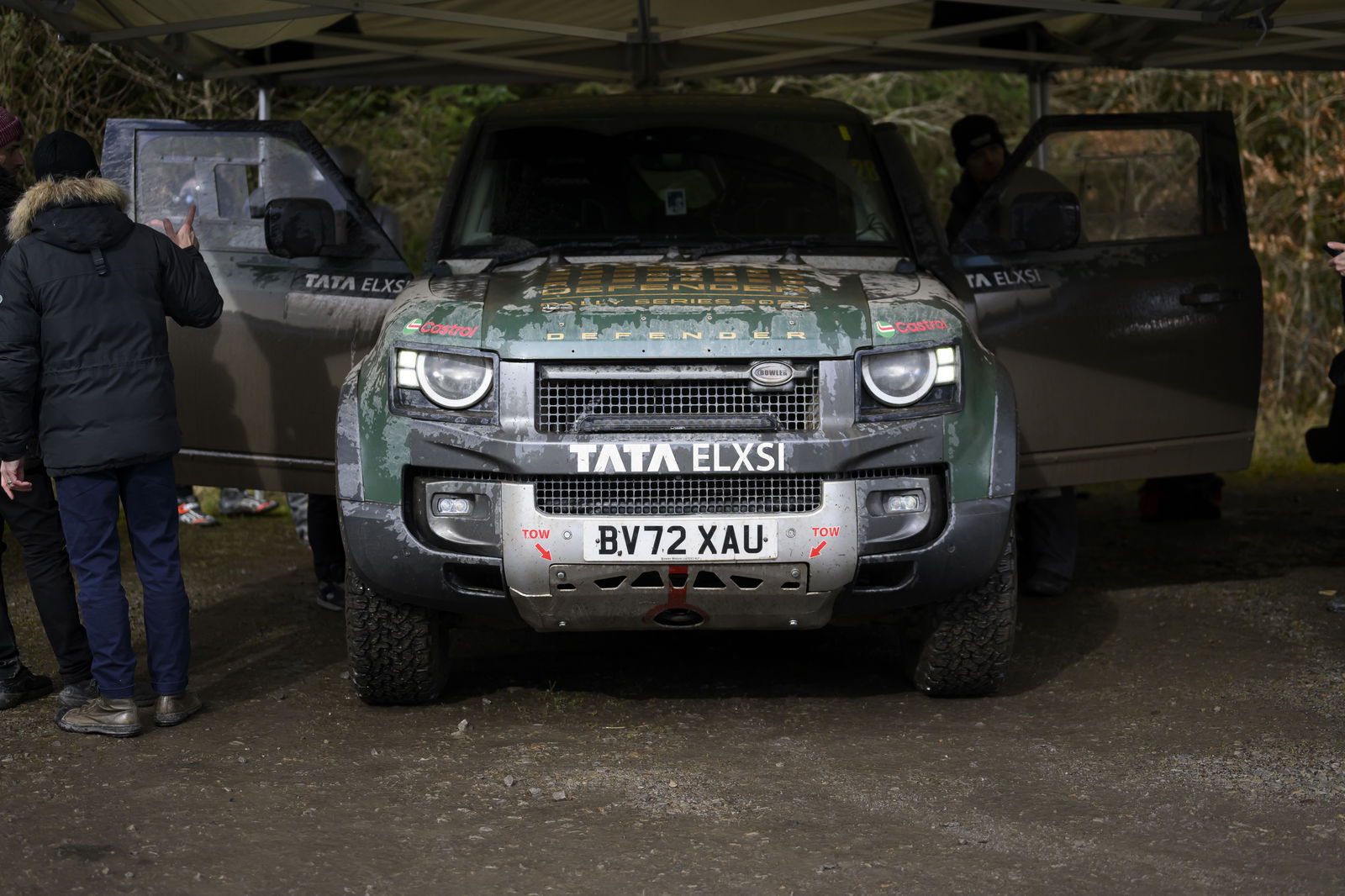
Fortunately, the car couldn’t be any less daunting. Bowler takes the base-spec Land Rover Defender SE from the production line and builds it to a Group N specification. Changes are mostly in the name of safety - fitting an FIA-approved roll cage and stripping out unnecessary weight is the key.
Bowler has also fitted a set of Fox dampers plus chunky BF Goodrich tyres and reinforced the chassis to deal with the extra abuse a rally stage will provide, but beyond that, it’s not all that far home from the Defender road car. There’s even the original infotainment system, and yes, Android Auto still functions.
Remaining completely unchanged is the P300 powertrain, a 2.0-litre turbocharged four-pot putting out the same 296bhp and 295 lb ft of torque as the road car. There are no adjustments to the mapping of the engine either, or the eight-speed torque converter automatic.
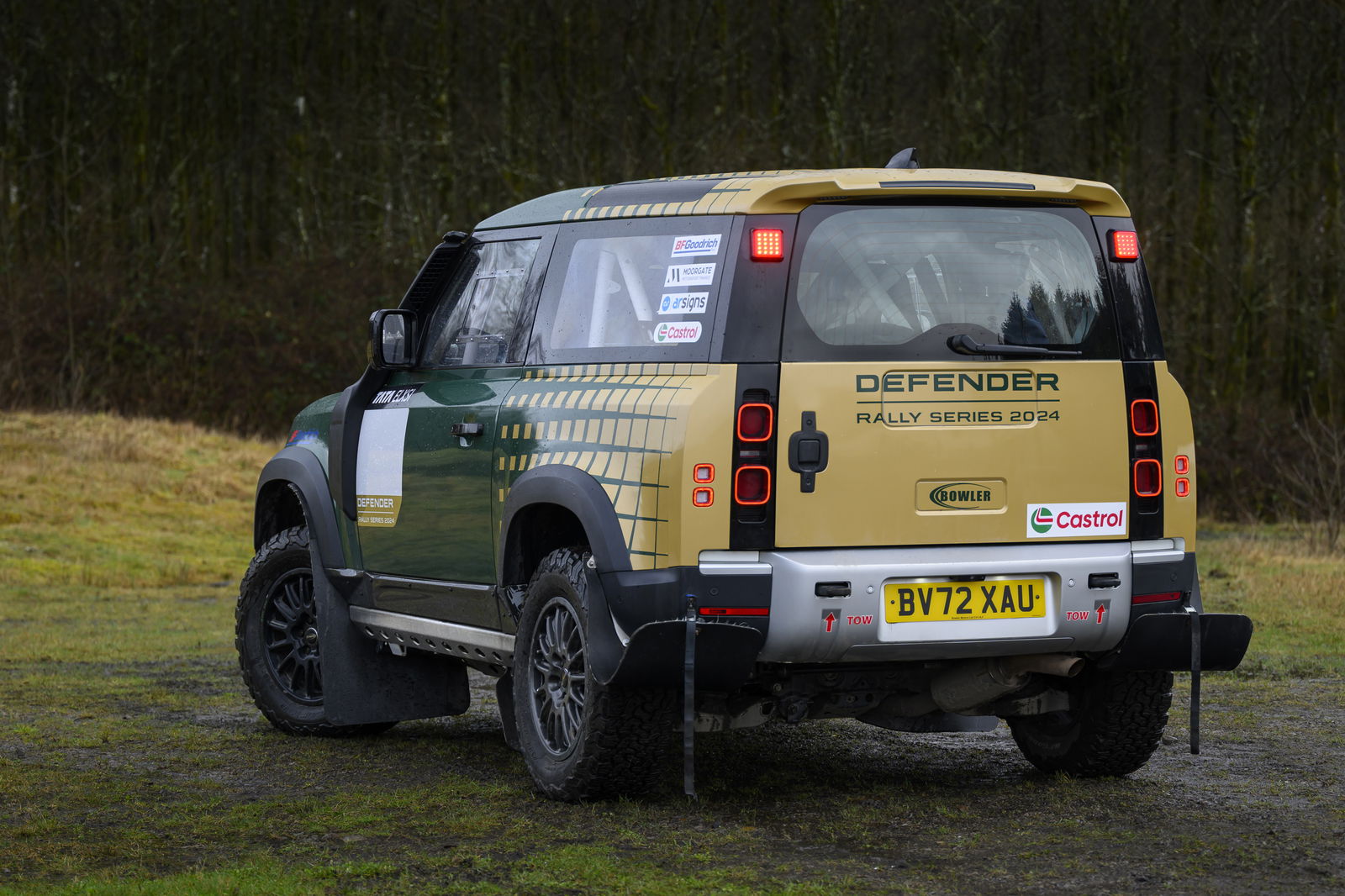
You may be wondering why Bowler has opted to go for the base-spec P300 rather than one of the six-cylinder units or even the V8 you can have in fruitier Defenders. Its answer is partly down to keeping the cost of entry down, but also to make the car more approachable. After all, if this is your first time rallying, the last thing you want is more power than you can handle.
This is a statement that applies to me, although my first outing in the Bowler Defender isn’t without helpful tuition. Sat in the driver’s seat for my first run of the test stage in the spec car is Matt Jackson, winner of a handful of local rally championships, a one-time competitor in the lower classes of WRC’s former Wales Rally GB and an engineer at JLR. Talk about the perks of the job.
We’re a few hours on from my first recce of the stage, and the weather has hit harder through the day and the mud ahead now resembles no man’s land. The fear factor has ramped up a little bit, but so too has the excitement.
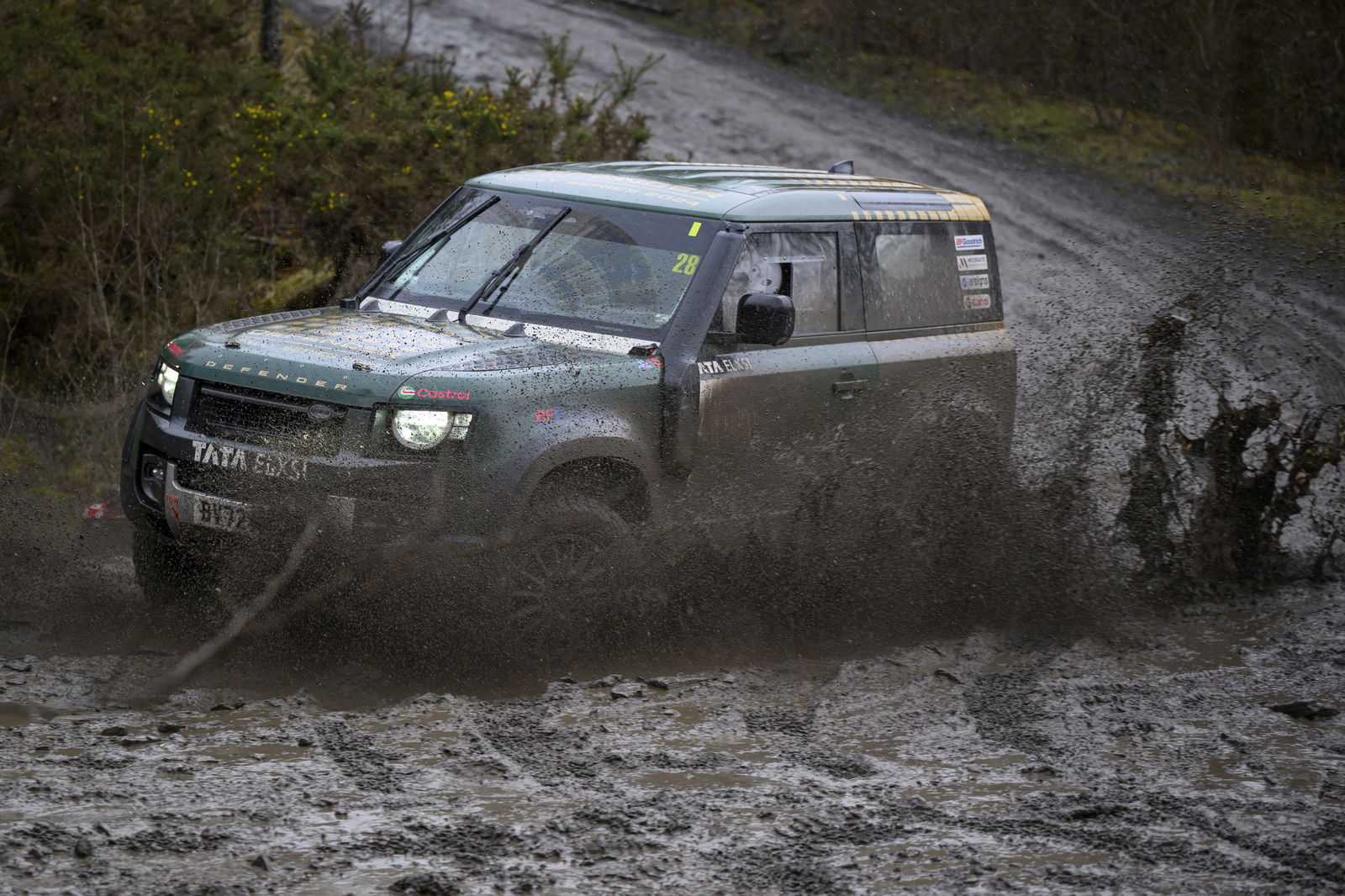
Matt, clearly the professional here, seems totally unphased by the conditions ahead. As we’re going through what to him surely feels like a gentle stroll but to me a high-attack run through the forest, he imparts some useful wisdom. The key, he tells me, is to keep inputs smooth, predictable and at a comfortable pace. To paraphrase, you can always add speed to your lines and technique - but rarely the other way around. Crucially, too, is to use the mud ruts to hook the car around like a train on rails, or risk an excursion into the trees.
It’s time to switch over and at this point, I’d anticipated the nerves might be through the roof. Happily, though, it’s the opposite. Despite sinking into a Cobra bucket seat and with an Alcantara-wrapped OMP wheel in my hands - two things you won’t find on a production Defender - there’s a remarkable feeling of familiarity. The driving position feels similar to the road car, and pulling away gently for my first run doesn’t give a sense of a car that’s so dramatically different either. Sure, it’s louder with fewer interior materials and the addition of a Bowler exhaust, but behaves predictably.
I’ve got Matt with me in the passenger seat guiding me through. I’m doing no more than about 35mph at best, but it feels enough at this point. I’m focusing on guiding the car into the ruts, keeping those inputs as smooth as I can and most importantly, not binning £115,000 worth of rally car.
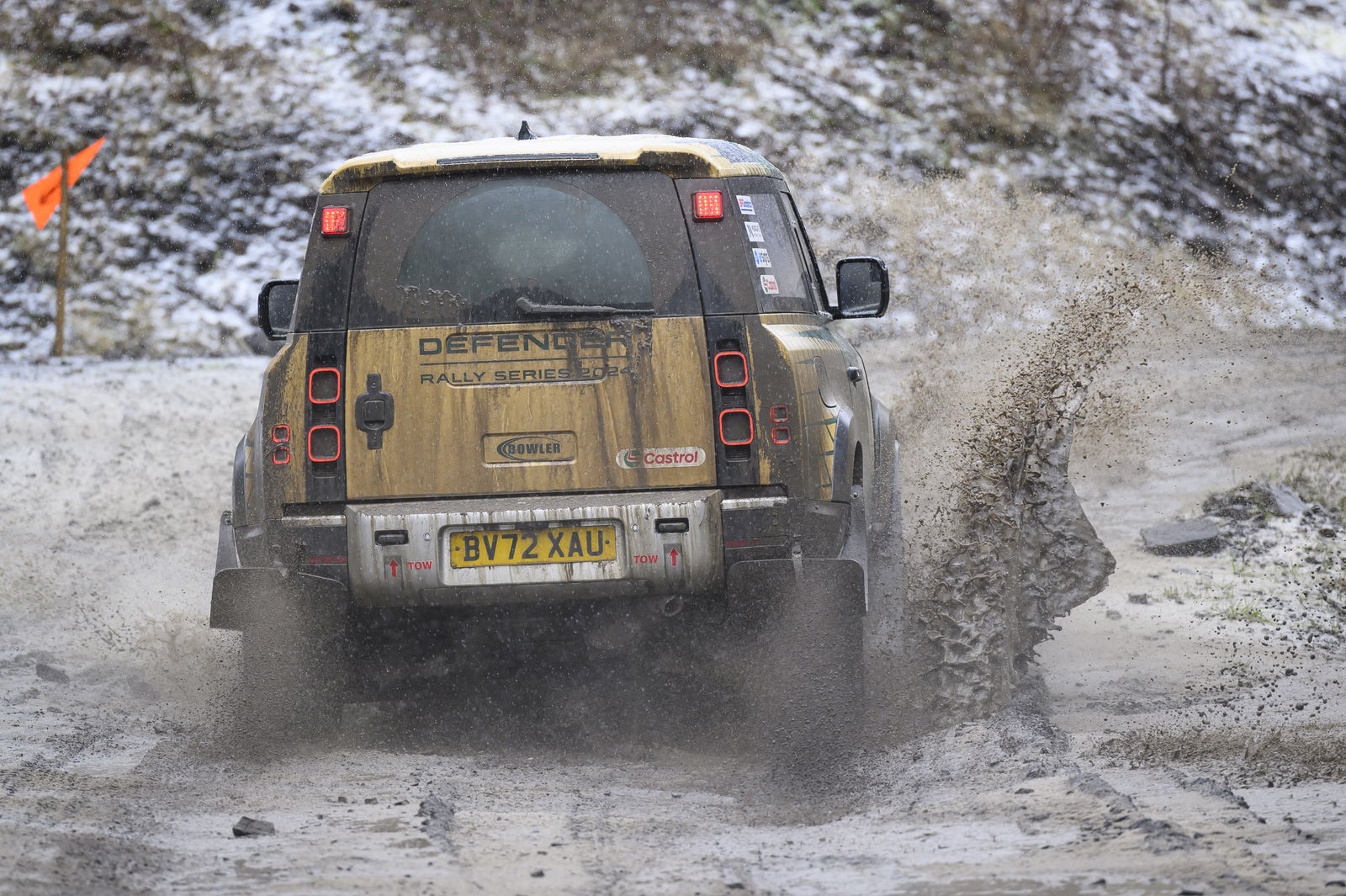
Delightfully, I don’t have to worry about much more than my own input which is perhaps the biggest compliment I can give the Bowler Defender. You don’t have to think a great deal about what the car is going to do - it’s consistent, predictable and best of all approachable, All key attributes to your first time rallying.
I do have one hairy, self-inflicted moment on that run - I get a little too keen on the throttle and suddenly the mud is pulling me towards the trees on the left. A little lift though and all is well and back on track, much to the credit of the car.
The second and final time around then, I’m brimming with confidence and as Matt has told me before, I can begin to add speed to the technique I’ve already begun to establish. Everything feels a little faster, a little smoother and more rewarding. It’s far from a hot run that’ll set me on the path to a Dakar seat with Bowler, but it’s an indication of how quickly you can build confidence with the car.
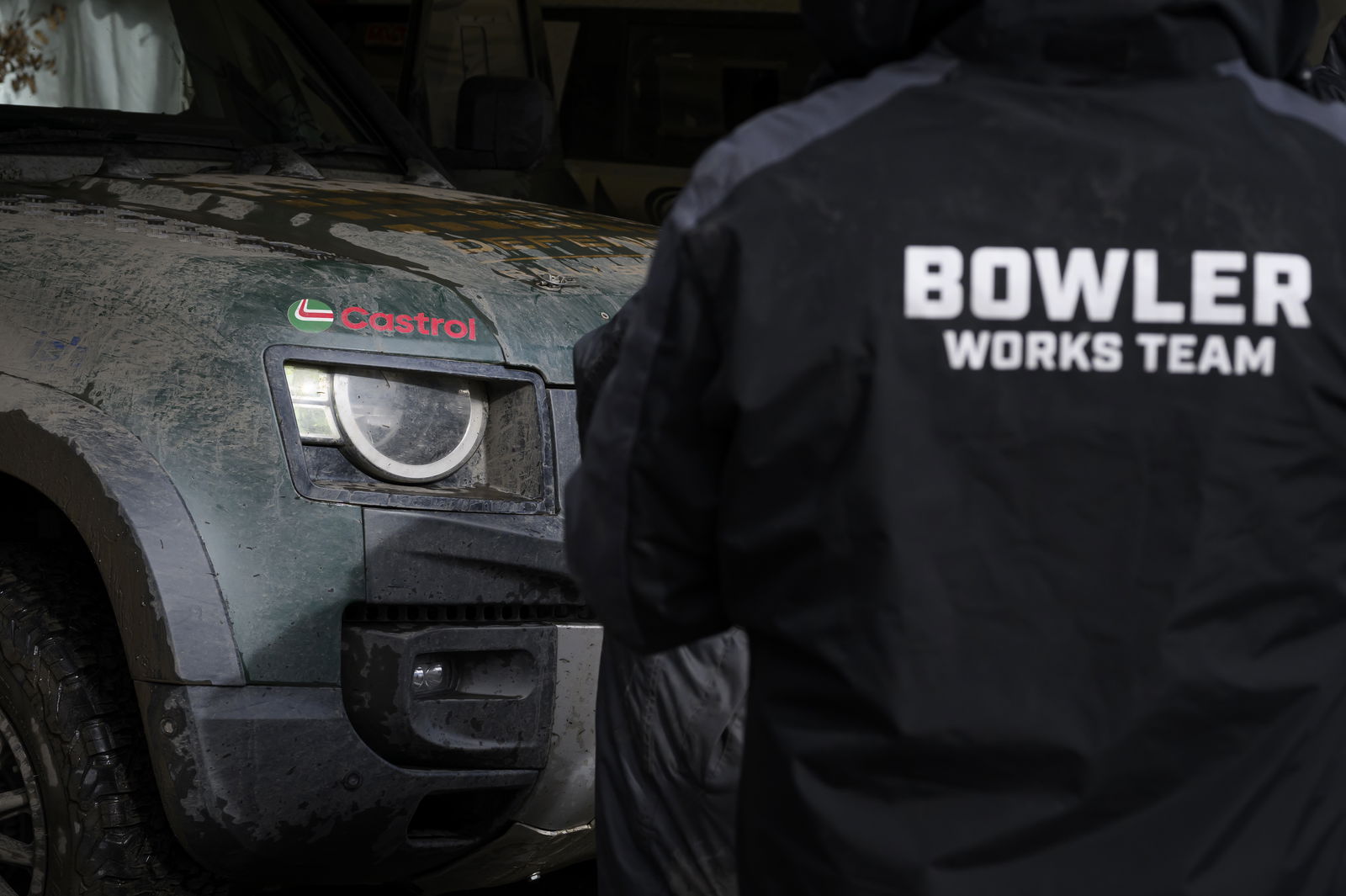
In just my short time experiencing the Bowler Defender Series, I get the appeal. If all you want to do is become a rally driver, and safe in the knowledge all you have to focus on is your own ability, this is the place for it. Expensive? Sure. Great value for money? Definitely.
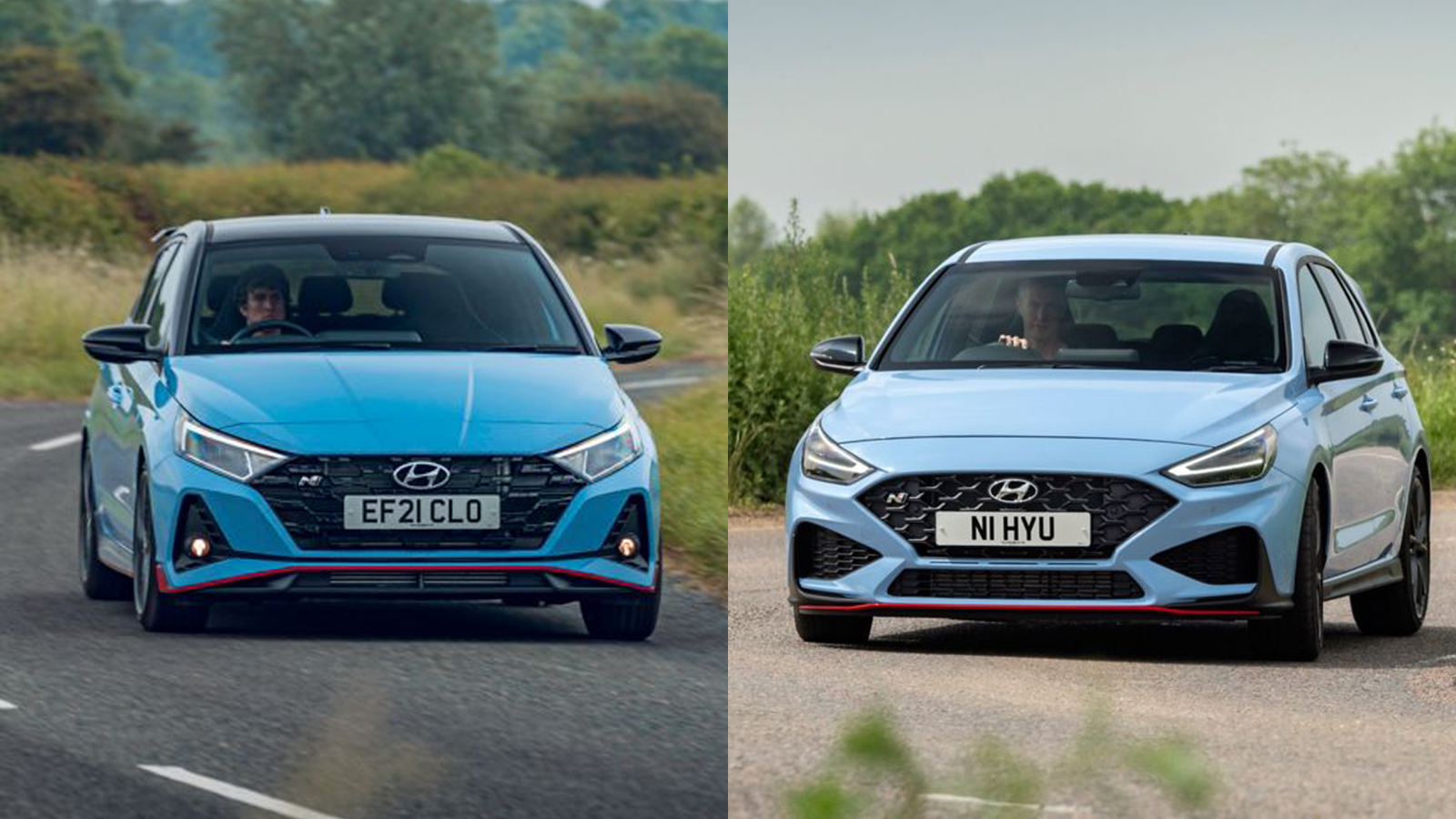
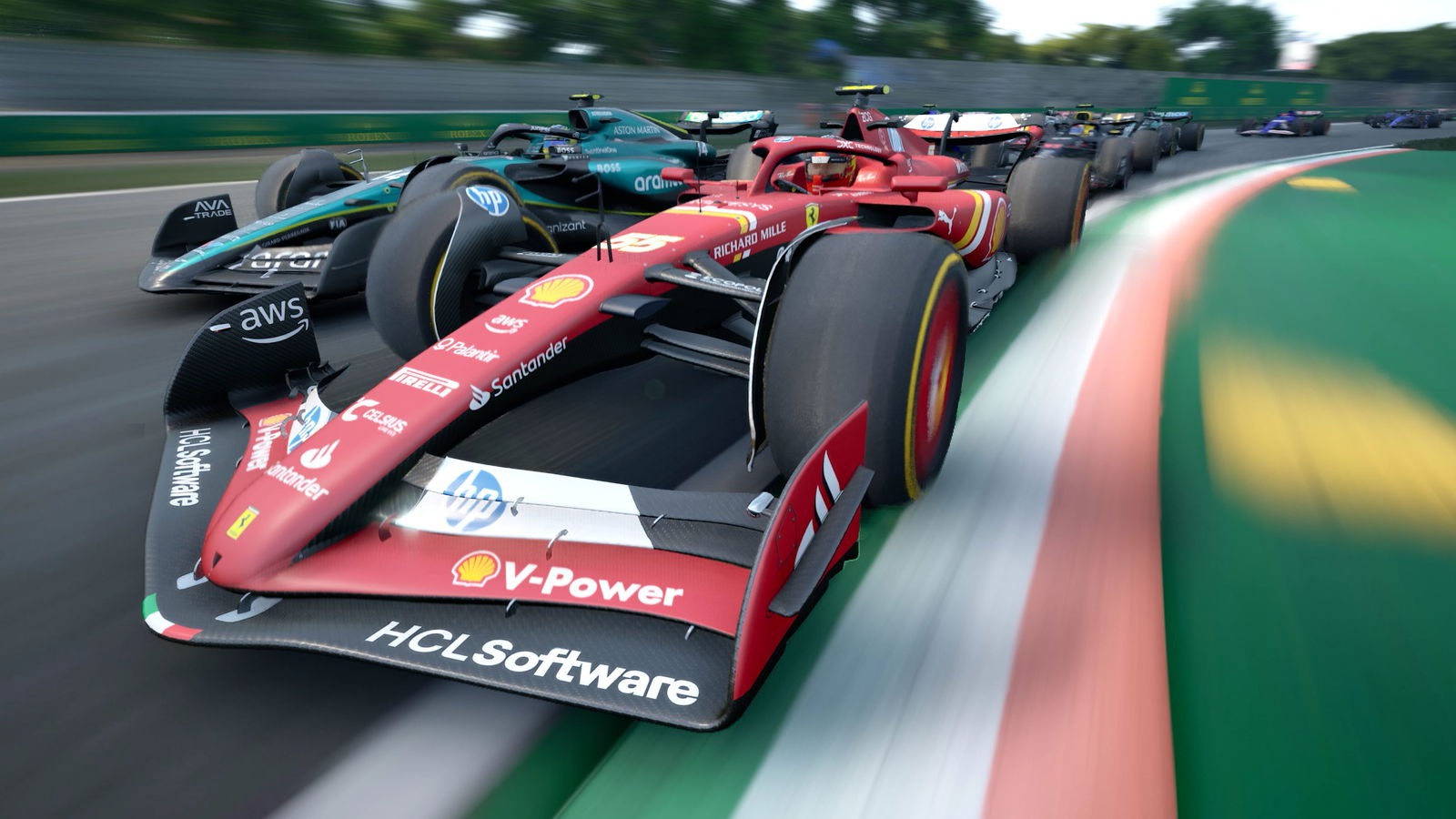

Comments